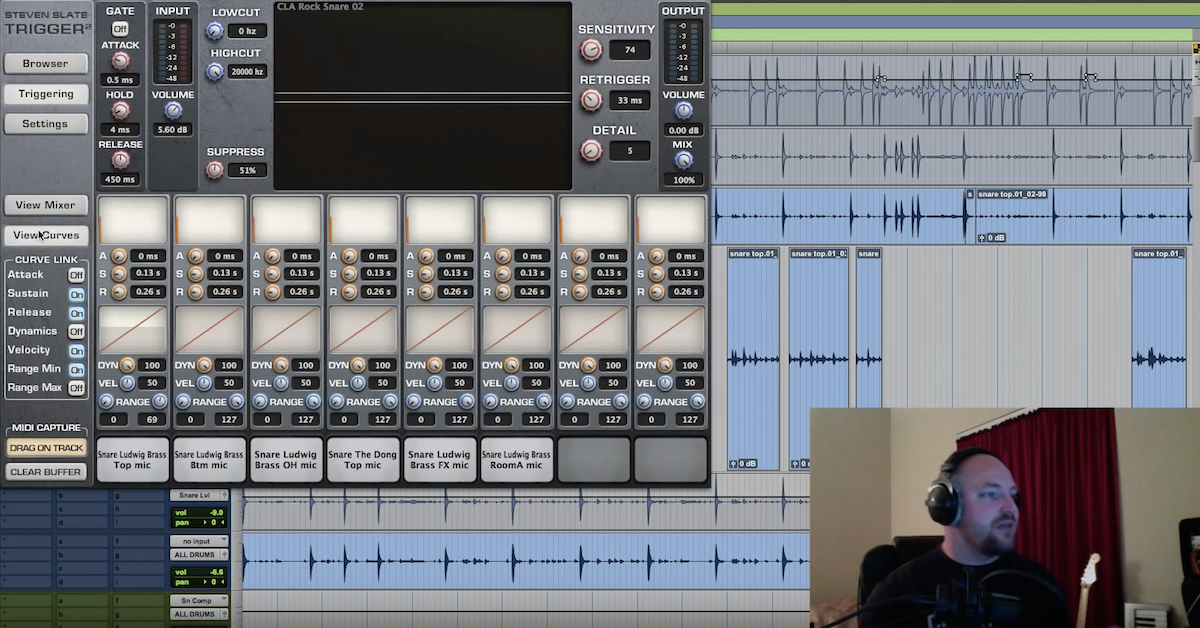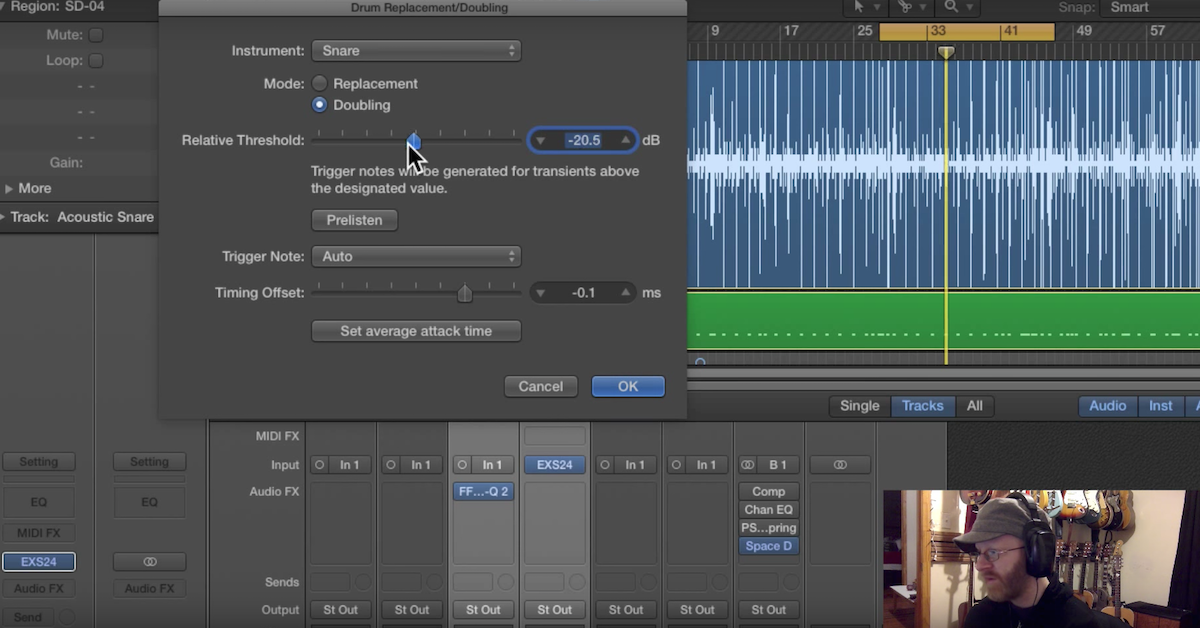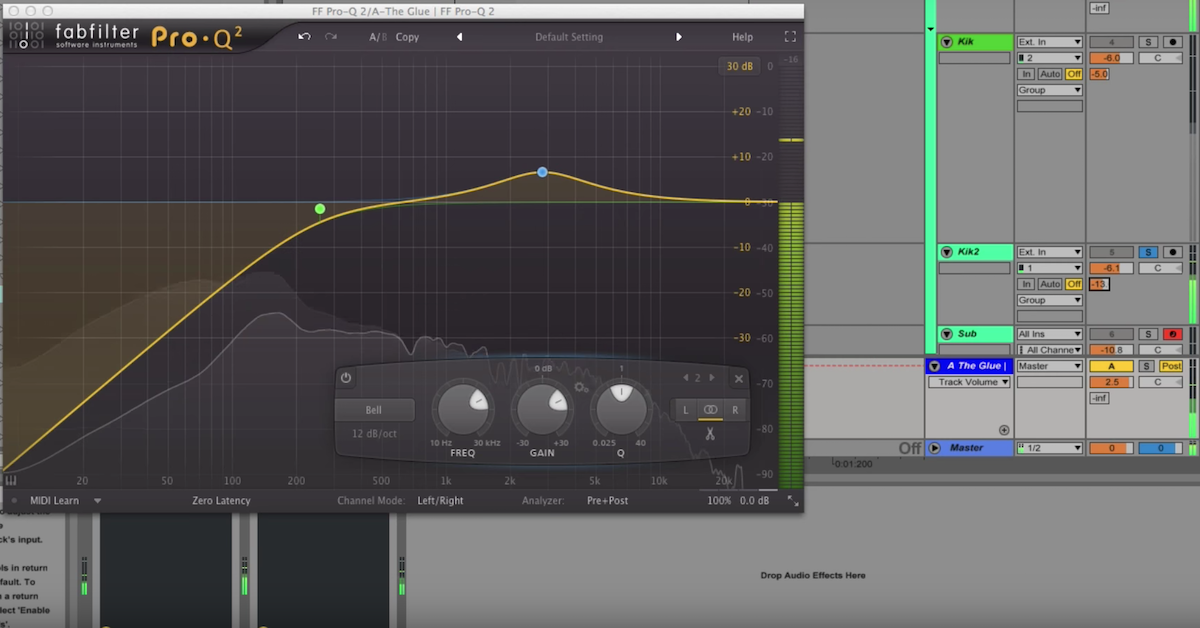5 Tips for Getting Better Drum Mixes
Article Content
Drums (particularly a full drum kit) can be one of the toughest instruments to get right in a mix. Today, we’re going to talk about five things you can do to make sure your drum mixes are the absolute best they can be.
1. Phase
Hear it once, hear it twice, hear it a million times (and then hear it again): Phase relationships can make or break your drum mix.
However, this point is so often talked about that it almost seems forgotten. For those of us who don’t have an awesome assistant to correct these issues for us, we must pay attention to all the microphone and how they’re interacting with one another.
So often, we’re tempted to throw on plugins to get a sound working in the mix before checking fundamental aspects like phase. I’d urge you to take everything off and start from scratch, working on the most fundamental level before touching a single plugin.
Thankfully, there are tools that can assist with the phase-alignment process. Sound Radix has created an amazing tool called Auto-Align that does it all in a few minutes.
If you’re looking for ‘big wins’ while mixing, improving phase coherency is a great place to start.
2. Samples
I know, you’re a badass mixer who doesn’t need samples to get the job done. You know it, everyone knows it, and it’s great.
However, today’s musical landscape sometimes calls for this kind of treatment. Even some of the best recorded drums in the world will have samples layered underneath them. The technology exists, so let’s be open to experimenting with it.
Samples are not “cheating,” they’re just another tool in your toolkit. Whether it’s reinforcing hits, getting rid of bleed, or simply bringing a different sound to the mix, samples open up a variety of tones that can push a drum production even further.
Blending samples together can also be great. If you have samples from a kit, use them, and then augment them with something else to make them your own. The possibilities are endless and it can be fun to create your own unique combinations.
3. Ditching Reverb
This can be a rough topic. Reverb is a vital tool for drum mixing and can easily be misused to create a mess of dead audio. While a huge room can sound amazing when the drums are soloed, you’ll often find that the beautiful decay, punch and life can disappear in the context of the mix.
Don’t get rid of reverb altogether, but try to use it sparingly. Generally, I’ll kill all reverb until I have my drum mix working together as a whole, and then find something with a short decay and plenty of pre-delay. That way, I give the drums some depth without making things too muddy.
Another trick I love when I have a mono room mic is to load a mono/stereo reverb and look for a good room sound to blend underneath. I can’t tell you how many times this has saved drums that were recorded in a less than ideal space.
4. Mute
It took me a long time to realize that sometimes the best option when mixing is to get rid of certain elements altogether.
This couldn’t be more true with drums. Oftentimes there are an insane number of microphones thrown up for a drum recording with the goal of capturing every possible nuance. However, not all these pieces are always necessary.
A good starting point is to first get the essentials working well together. The best sounding close mics and overheads are usually where I start. Then, I unmute other mics depending on what I need. If I want more decay, I head for the long room. If I can’t quite make out the ride, I head for the ride’s spot mic.
Starting from this place ensures that the mix doesn’t get overdone and that you’re only using what you need to get the job done, not simply using something because it’s available. Also, less mics to correct phase!
5. Context
Drums always need context. They’re one of the only instruments that need to work across the entire frequency spectrum in most mixes. Nothing is worse than getting some amazing drum tones, only to have all your work squandered by unmuting guitars.
This applies to all instruments in a mix, but when you’re mixing drums, try to make moves and then check them against everything else before moving forward. This way, you keep the drum mix headed in the right direction in the context of the rest of the mix. Sorting through all the processing later can be a nightmare.
Conclusion
Mixing drums can be an ongoing battle. Every set of tracks is new with unique challenges to face, and it can be overwhelming to try and get 20+ microphones to sound like a cohesive kit — especially if they were poorly engineered.
Implementing these five tips into your process will not do your job, but they’ll help make sure each move you make goes that much further toward the goal of getting a great sounding mix.





